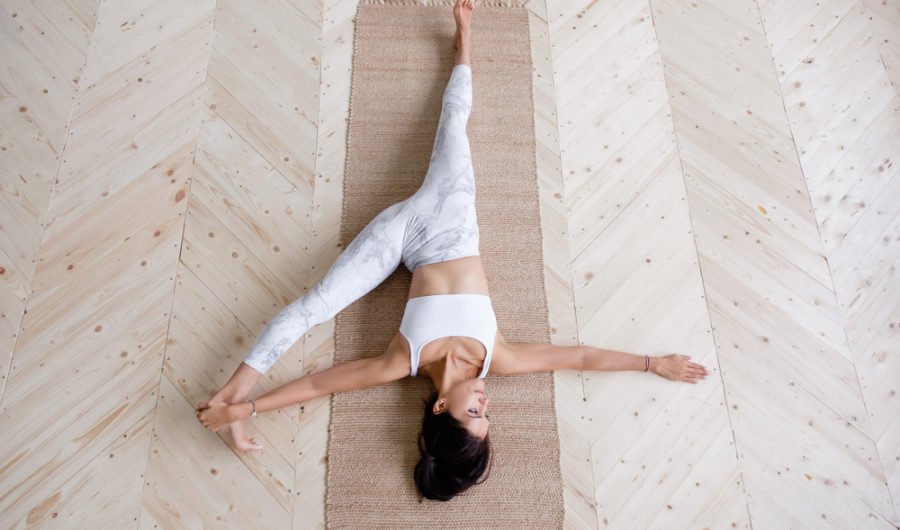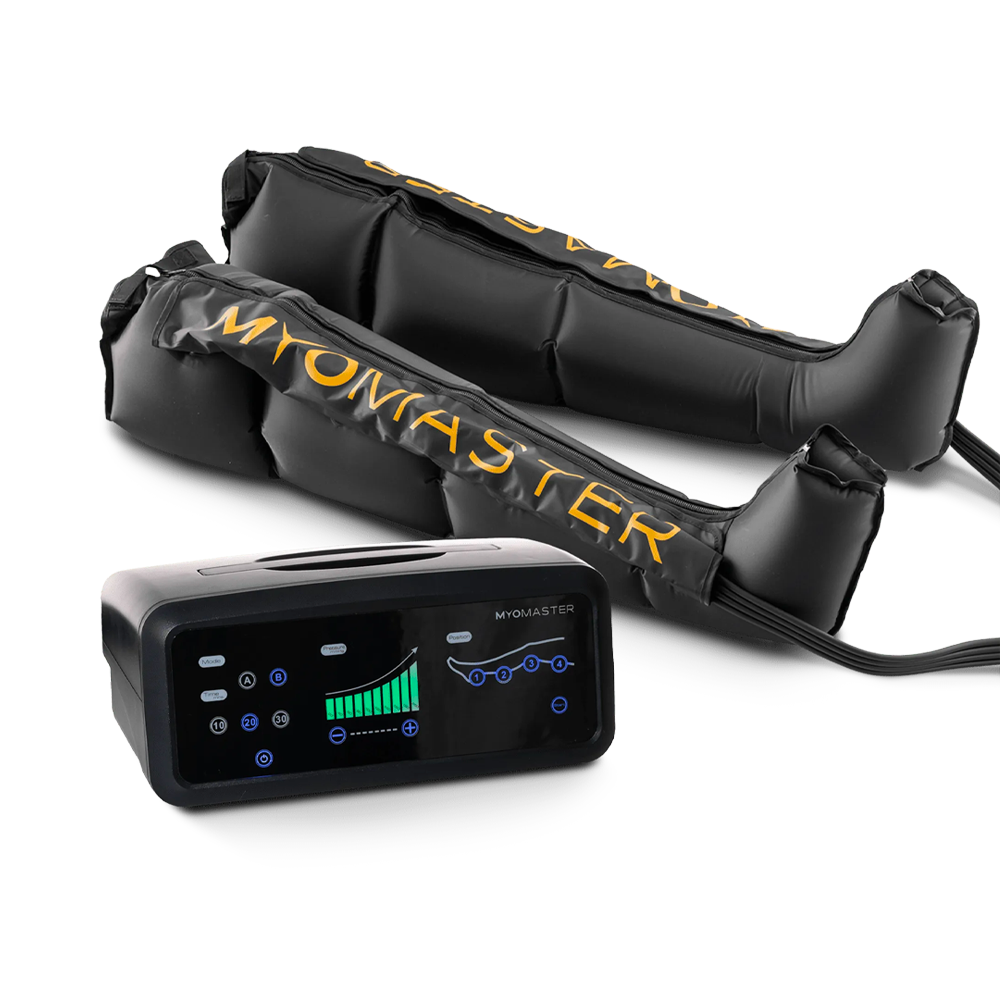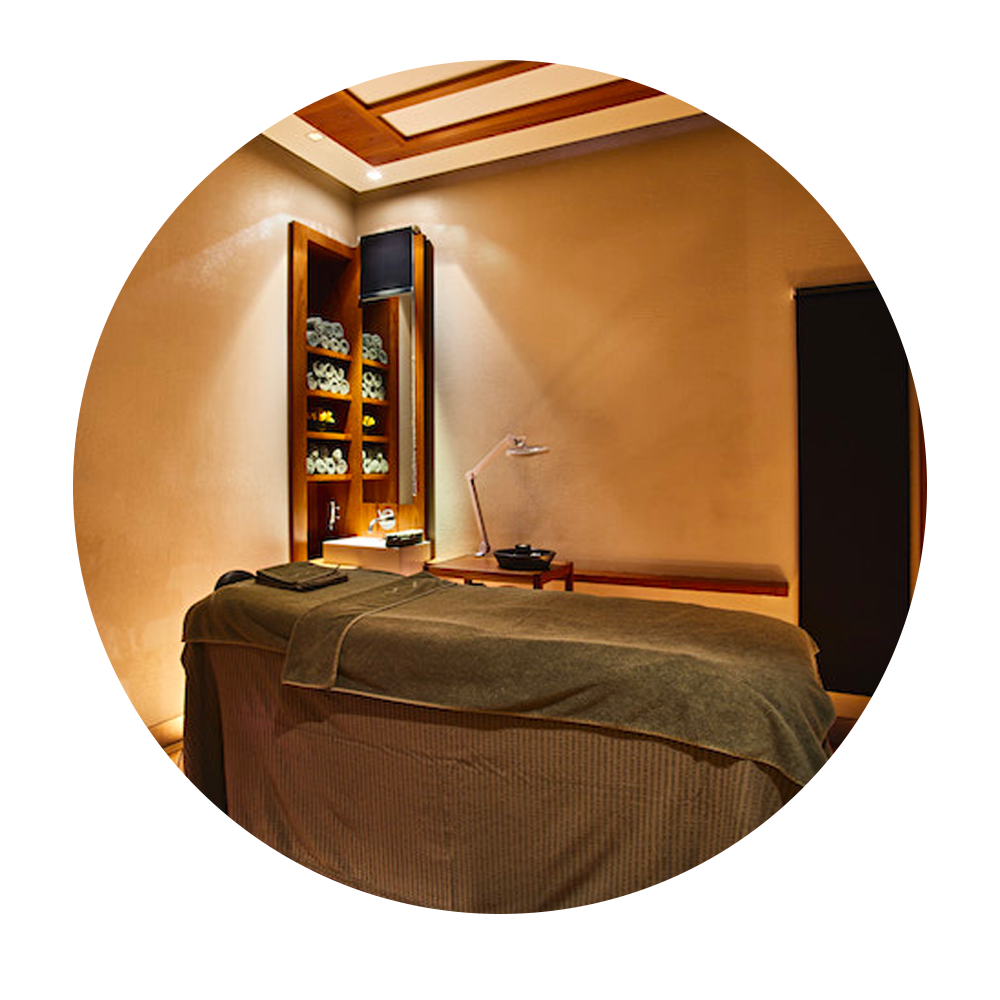The importance of recovery and mobility has never been more talked about, with studios popping up over London solely dedicated to stretching and mobilising, products that are tailored to aid tired muscles and professionals making it their mission to drill the importance of recovery. This big push on recovery is a knock-on effect of how our lifestyles have adapted, in the modern world hustle culture is the new norm with many of us dashing from our desks to the gym to squeeze a workout in. Don’t get us wrong, we’re massive advocates of a sweaty workout that leaves you bursting with endorphins but the point we’re trying to make is, do you dedicate even a fraction of your time to recovery and mobility? The answer for many is probably not, but hopefully, this is soon to change! We’ve chatted with some of the experts to find out more about simple ways to implement recovery methods and mobility sequences into your daily routine. From gadgets that help recuperate fatigued muscles, to the top mobility exercises to do when you’re short of time, here are some tips for the experts that will ultimately help you to move better.

Mike Tanner
Head of Education at Bodyism

Jo-Leigh Morris
Head of Mobility at BXR

James Heagney
Gym Director at KX

Tom Cuff-Burnett
PT & Movement Specialist

Just to strip things back to basics what does mobility actually mean/look like and where does it fit into our schedule?
Mike: Mobility is the functional range of your joints, it’s gained through massage, stretching, foam rolling, specific movements and consistency.
James: It is an excellent way to prepare the body for exercise. Your body’s mobility will play a huge role in your athletic performance and injury prevention.
Jo-Leigh: A mobility session should be done ideally 5 times a week for 5-15 minutes. A mobility warm-up is non-negotiable prior to exercising and can be done for 5-10 minutes before.”
What is the difference between mobility and stretching?
Tom: Stretching (or ‘flexibility’) is to do with muscles and their ability to lengthen fully, whereas mobility is concerned with joints and their range of motion, and refers to a combination of both flexibility and strength.
James: Mobility is actively moving your body or specifically joints in a controlled motion and can be dynamic. Flexibility is typically referred to statically stretching muscles, not joints and this is usually performed in a passive manner.
What are the benefits of having a structured mobility routine?
Tom: The benefits of having a structured mobility routine are plentiful! Firstly, it will have a hugely positive knock-on effect on your flexibility, as you start to test your muscles through their end range of motion under load. This leads to increased strength potential as a result of this increase in range of motion, e.g. better squat depth will translate to a heavier squat PB over time. Working through your full range of motion also recruits more of the small, stabilising muscles around a particular joint, allowing you to perform movements more fluidly and contributing to an overall decreased risk of injury, soreness and joint pain.
How much time per week should we ideally be dedicating to mobility?
Tom: Ideally you should make mobility a daily practice. Understandably though, that can be a big ask if you’re just starting out, so aim for between 2-4 times per week and build from there.
James: You are only as strong as your weakest link. If mobility is a limiting factor for you then I recommend this is a priority. Typically mobility could reflect 10-30% of your total training time per week but in truth, this is highly individualised.
When is the best time to mobilise the body?
Jo-Leigh: This is no set time, it’s about making it consistent and attainable. So when suits best for the individual or when their body feels like they need it best. But of course, it’s always before a workout by following a RAMP template- raise, activation, mobilise and potentiate.
How can mobility better your performance?
James: Increasing ranges of motion elevate the potential to recruit a greater number of muscle fibres thereby generating more force.
Top mobility drills recommended by the experts here on YouTube…
-Half-Kneeling Hip Flexor Stretch
-Deep Squat With Thoracic Rotation
How much time should we be leaving between workouts? (be specific on types of workouts, ie. strength training with upper body/lower body/full-body, HIIT, etc.)
Tom: Recovery will differ from individual to individual. The type of training you do will play a role too, for example; with heavy, load-bearing strength exercises targeting a specific part of the body, such as squats, it’s typically recommended to take 24-48 hours of recovery before training that specific body part again, whereas you may be able to do HIIT training every day, depending on the level of velocity/impact you’re including in your sessions, i.e. four days of jump squats and burpees probably isn’t wise, but general full-body circuits using predominantly bodyweight should be fine to repeat!
Many of us turn to mobility once niggles in our body have already arisen, in this case, is it best to see a professional IRL or can a good mobility routine help this issue?
Mike: A niggle is generally a potential injury so seeing a professional sooner rather than later means 1- it’s easier for them to fix and 2- it’s dealt with in the right way, sometimes doing your own mobility isn’t what a niggle needs.
Tom: There’s a wealth of information, guidance and tutorial videos to be found online these days, so if you are smart about searching out the correct mobility routine, that will definitely help ameliorate any niggles or issues you’re experiencing.
If you have one top tip for moving better and achieving optimal performance what would it be?
Mike: Variation, move your body in many different ways.
Tom: Never do half reps! Leave your ego at the gym door, forget about the weight on the bar and approach each session as if you are having your picture taken for a movement textbook: your form should be the priority in everything you do. This, and consistency – make mobility a habit and keep working at it, because if you don’t use it, you lose it.

What exactly is a recovery plan?
Jo-Leigh: It’s a strategy to get the body back to homeostasis in order for it to be able to perform at its optimum.
James: To me, this is a weekly schedule that is just as important as brushing your teeth and taking a shower. It’s a commitment to yourself to follow various planned recovery strategies in order to maximise your training adaptations which ultimately sees an improvement in performance.
What does a solid recovery involve?
Mike: An effective recovery involves a holistic approach, so healthy food to replenish energy stores and rebuild muscles, sleep to allow repair to take place, movement and manual therapy for tightness and muscle soreness.
James: Adequate nutrition for your goals down to precise protein, carbohydrates and fats. Rest days and biometric feedback such as grip strength, heart rate variability (HRV) and subjective willingness to train.
What are the telltale signs of burnout from exercise and how do we stop it in its tracks?
James: Decreases in strength, elevated morning resting heart rates and unwillingness to exercise are all telltale signs.
Mike: Some other signs of burnout from exercise are the immune system not working as well resulting in getting ill more often, muscle soreness lasting longer than normal, lack of performance and ability. A clever way of stopping it is to reduce your volume of exercise, you can do this by keeping the same intensity/weight but reducing how many sets you do.
Aside from daily recovery rituals, what are the more ‘one off’ treatments and therapies that help aid recovery?
Mike: Some great one-off treatments are ice baths, infrared saunas, fascial stretching, massage and yoga.
James: Some more specialised treatments which are highly effective are Hyperbaric oxygen chambers, Red Light Therapy, Cryotherapy, compression therapy and most forms of manual muscular bodywork.
Should we be pushing ourselves to work out when we’re feeling tired?
Jo-Leigh: If you are feeling fatigued either mentally or physically then recovery is the priority. It’s having the awareness of yourself and checking in with yourself.
Many of us are keen to move in some way every single day to boost our mental health, do you have any ideas for active recovery/rest day activities?
Mike: Walking and cycling are great active recoveries as they get the blood flowing to the muscles and it’s the blood that carries the nutrients to the muscle that help the recovery process. They are also both great due to getting you outside and off your phones.
THE PRODUCTS…
THE TREATMENTS…























